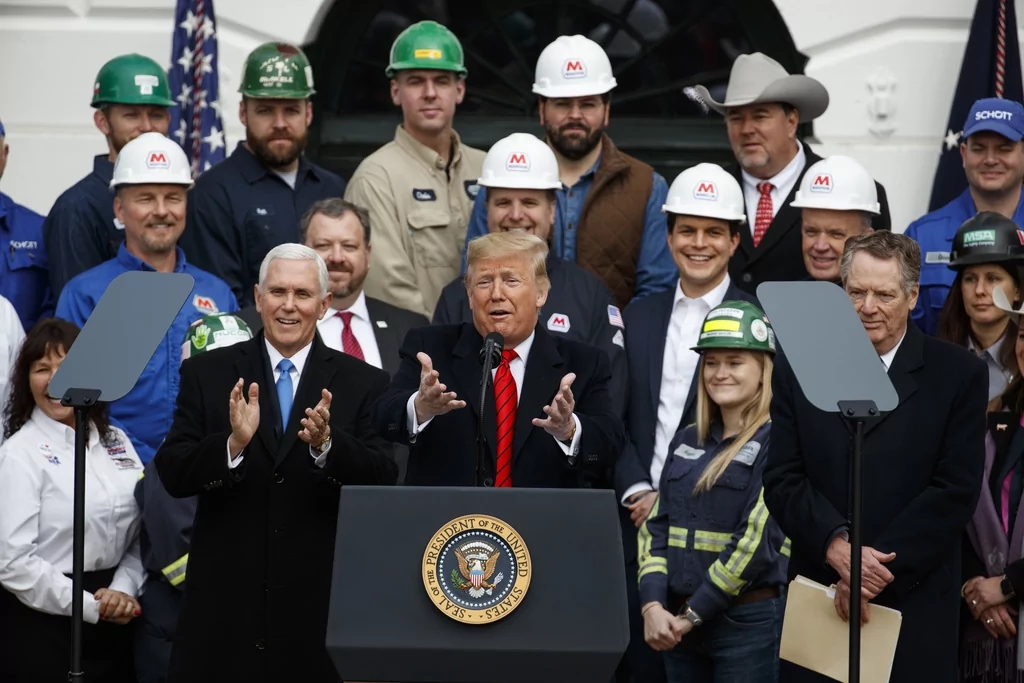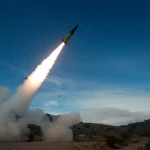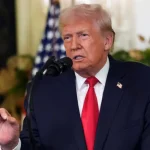

President Donald Trump is betting a trade war will usher in the manufacturing revival that eluded his first term as he begins to impose sweeping global tariffs.
Trump promised a “resurgence” of American manufacturing Monday as he signed 25% tariffs on aluminum and steel, teasing that the White House will roll out more levies in the coming weeks.
“It’s time for our great industries to come back to America,” he said from the Oval Office. “I want them back to America.”
Some 350,000 manufacturing jobs were added to the U.S. economy under Trump before the coronavirus pandemic wiped out the gains in 2020, while former President Joe Biden oversaw the creation of more than 600,000 across his four years in office.
Trump has turned to the same playbook as his first term, when he threatened tariffs on everything from Chinese to Canadian goods. He ultimately won concessions that served as the basis for new trade deals, while Biden kept most of the Chinese tariffs Trump put in place.
But economists are questioning whether Trump’s actions will spur the job growth he is promising as the White House considers tariffs on cars, computer chips, pharmaceuticals, and more.
In the case of steel, the number of jobs in the United States has been cut almost in half since 1987, according to the Bureau of Labor Statistics, and has been basically flat since Trump first took office in 2017.
At the same time, U.S. steel production has held steady since the late 1980s, suggesting that increased productivity is at least partly responsible for the employment losses.
“When you put tariffs on steel, you may or may not protect jobs in the U.S.,” said Douglas Holtz-Eakin, president of the American Action Forum and a former director of the Congressional Budget Office. “You will definitely raise the price of steel to steel users in the United States. It is the hope of this administration that tariffs will produce more jobs in the U.S., but that has never actually happened.”
Trump’s use of tariffs is part of the economic populism that aided his 2016 and 2024 election victories, appealing to the Rust Belt states decimated by decades of outsourcing. As a political tool, they are also viewed as a way to get tough on China.
But it appears Trump is going to be even more aggressive this time around after he granted friendly nations exemptions in his first term.
“He thinks that it’s not fair that we have trading partners that charge tariffs two or three times what we charge,” White House National Economic Council Director Kevin Hassert told the Washington Examiner.
Canada, Mexico, and the European Union are all top of mind for Trump as he targets nonreciprocal tariffs in an effort to cut the U.S. trade deficit.
Trump explained his philosophy Monday as he signed the steel executive order, framing his tit-for-tat worldview as a way to level the playing field and close a $918 billion trade deficit.
“We don’t want it to hurt other countries, but they’ve been taking advantage of us for years and years and years, and they’ve charged us tariffs,” he said. “Most of them have charged us — almost everyone, I would say, almost without exception. They’ve charged us and we haven’t charged them. And it’s time to be reciprocal.”
“If they charge us, we’ll charge them,” Trump added.
Still, Trump is facing skepticism that his tariffs will have unintended consequences, with economists warning they could even harm the industries he is trying to save.
“Do we want to invest in the Detroit auto industry?” University of Massachusetts-Amherst economist Gerald Friedman asked. “A tariff that pushes up the price of steel could be good for the steel industry in this country, but at the cost of the auto industry and the cost of generalized inefficiency.”
One knock-on effect of the tariffs is that other countries will respond in kind. China is already testing how much pain companies will accept, announcing a 15% tariff on coal and liquified natural gas imports and a 10% duty on oil, agricultural machinery, and some cars.
“I don’t know if it’s a good idea to be confronting China in this way,” Friedman said.
CLICK HERE TO READ MORE FROM THE WASHINGTON EXAMINER
Trump has acknowledged that Americans could feel “some pain” as his new tariffs take effect, but the White House has simultaneously touted the change in behavior from allied nations seeking to avoid the levies.
Earlier this month, Canada and Mexico agreed to step up efforts to halt drugs and illegal immigrants from entering the U.S. in the face of tariff threats from Trump.





